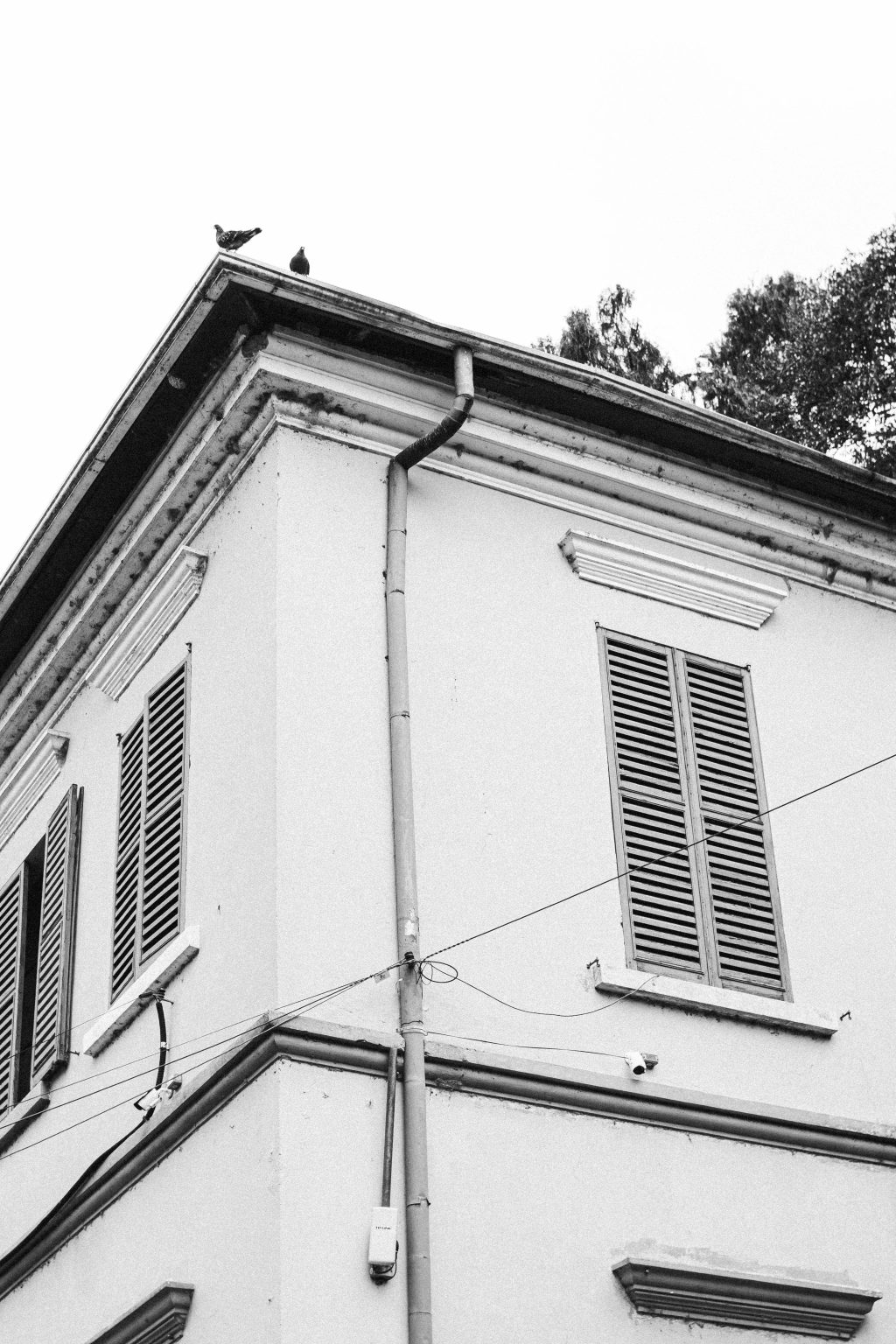Gutters might not be the most glamorous part of your home, but they’re absolutely crucial in protecting your property from water damage. After years of dealing with my own gutter nightmares (including that memorable autumn when leaves clogged everything so badly that water was cascading down my walls like a bizarre indoor waterfall), I’ve learned a thing or two about these essential home features.
Most homeowners tend to ignore their gutters until something goes catastrophically wrong. Trust me, I’ve been there. But a bit of regular attention can save you thousands of pounds in repairs down the line. So let’s look at those pesky problems that plague our guttering systems & how to sort them before they turn into proper disasters.
1. Clogged Gutters
This is the granddaddy of all gutter problems. Leaves, twigs, bird nests, tennis balls (yes, I once found my son’s tennis ball creating a perfect dam in our downpipe) — you name it, it’ll find its way into your gutters. When debris builds up, water cannot flow properly, leading to overflow and potential damage to your fascia boards, walls, and foundation.
The solution? Regular gutter cleaning. Most experts recommend clearing your gutters at least twice a year — once in late autumn after the leaves have fallen, and again in spring. If you’ve got lots of trees nearby, you might need to do this more frequently. I personally check mine quarterly just to be safe.
For those who HATE climbing ladders (me included), consider investing in gutter guards or screens. They’re not perfect, but they significantly reduce the amount of debris that gets in. Prices typically range from £5 to £30 per metre depending on quality, and they can be a worthwhile investment for reducing maintenance.
2. Sagging Gutters
Have you noticed sections of your guttering hanging lower than they should? This happens when the brackets holding the gutters become loose or damaged, often due to the weight of debris or water. Sagging creates low points where water pools instead of flowing to the downpipes.
Fixing this issue isn’t too complicated. First, clear any debris and check if simply tightening the existing brackets solves the problem. If not, you’ll need to replace broken brackets or add additional ones for support. Brackets typically cost around £2-£5 each and should be placed approximately every 1 metre along the gutter length.
In some cases, you might find that your guttering has warped or been damaged beyond repair. If so, replacing that section might be your best bet. PVC guttering is relatively inexpensive at about £10-£15 per 4m length and is fairly straightforward to install for the moderately handy homeowner.
3. Leaking Joints
Water dripping from the joints between sections of guttering is a common and particularly annoying problem. These leaks typically occur at the seams where sections meet or at corners. The usual culprits are deteriorated seals, cracks in the guttering itself, or sections that have simply pulled apart over time.
To solve this issue, first ensure the guttering is clean and completely dry. Check whether the sections have simply come apart and can be clipped back together. If the problem is with the seal, apply a suitable gutter sealant (around £5-£7 per tube) to the joint after cleaning off any old sealant residue.
Sometimes the joint itself might be damaged beyond repair. In these cases, you’ll need to replace the connector piece, which typically costs between £3 and £8. It’s a small investment that can prevent significant water damage to your property.
4. Improper Slope
I didn’t realise how important this was until I tried to fix my own guttering! Gutters need to be installed with a slight slope towards the downpipes to ensure water flows correctly. If the slope is too steep, water rushes too quickly and can overshoot the downpipe. If it’s too shallow or — worse — sloping the wrong way, water will pool and potentially overflow.
The ideal slope is about 1:350 (approximately 3mm drop for every metre of guttering). To check yours, pour a bucket of water into the gutter at the end furthest from the downpipe during dry weather. It should flow smoothly towards & down the pipe without pooling.
Adjusting the slope usually involves repositioning the brackets that hold the guttering. This might mean detaching sections, adjusting the brackets, and reattaching everything — a bit fiddly but not terribly difficult. If you’re not confident doing this yourself, a professional gutter specialist might charge £80-£150 for a straightforward adjustment.
5. Damaged or Cracked Guttering
Cracks, holes, or splits in guttering create obvious leak points. These are often caused by age, impact damage (like that time my neighbour’s ladder slipped…), or freeze-thaw cycles in winter. UV exposure can also cause PVC guttering to become brittle over time.
Small cracks or holes might be repairable with gutter sealant or repair tape, which costs around £6-£12. For larger damage, replacing the affected section is usually the most effective solution. Thankfully, modern guttering systems are modular, so you don’t need to replace everything — just the damaged part.
When buying replacement sections, be sure to match the profile and material of your existing guttering. Take a small piece or clear photo with you to the DIY shop to ensure compatibility. Most common residential guttering in the UK is either half-round or square in profile.
6. Downpipe Blockages
Even when your gutters are flowing perfectly, problems can occur in the downpipes. These vertical pipes carry water from the gutters to ground level or to drains, and blockages here can be particularly problematic.
Signs of a blocked downpipe include water overflowing from gutters near the downpipe despite the gutters themselves being clear, or minimal water coming out at the bottom when it should be flowing freely during rainfall.
To clear a blockage, try using a pressure washer from the bottom up, or a plumber’s auger (drain snake) to dislodge whatever’s causing the obstruction. For persistent problems, consider installing a downpipe leaf guard at the top (about £5-£10) to prevent debris entering in the first place.
If your downpipe connects directly to an underground drainage system, it might be worth installing a cleaning access point if one doesn’t already exist. This makes future maintenance much simpler.
7. Ice Dams in Winter
During particularly cold winters, water in gutters can freeze, creating ice dams that prevent proper drainage. As more water backs up behind these dams, it can seep under roof tiles or through fascia boards, causing leaks and water damage.
Prevention is better than cure here. Ensure your loft is properly insulated to prevent heat escaping through the roof, which causes snow to melt and then refreeze in the gutters. Also check that your loft is adequately ventilated to maintain a consistent temperature.
If ice dams do form, never try to hack away at the ice as you might damage the guttering. Instead, use hot water to carefully melt channels through the ice, or try using calcium chloride ice melter designed for roofs (about £15-£25 per bucket). In severe cases, heated gutter cables (from £50) can be installed before winter to prevent ice formation altogether.
The Bottom Line
Most gutter problems are perfectly fixable with a bit of time & effort. Regular maintenance is absolutely key — I’ve learnt this the hard way! It’s much easier to spend an hour clearing leaves twice a year than dealing with damp walls or a compromised foundation.
If you’re not comfortable with heights or lack the time, professional gutter cleaning services typically charge £70-£120 for an average UK home. Money well spent, I think, especially when you consider the potential cost of repairs from water damage. Your gutters might not be the most exciting part of your home, but they certainly deserve some attention!



